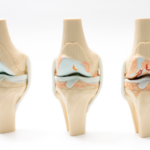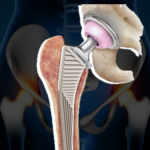
As medical technology continues to evolve, robotic-assisted knee replacement surgery has emerged as a groundbreaking innovation. This cutting-edge procedure offers enhanced precision and potential benefits for patients undergoing knee replacement. However, some concerns persist regarding the safety and accuracy of this advanced technology. In this comprehensive exploration, we’ll delve into the intricacies of robotic knee replacement, addressing these concerns and shedding light on its safety, accuracy, and overall efficacy.
Robotic knee replacement surgery involves the integration of robotics and computer-assisted technology into the traditional knee replacement procedure. It enables surgeons to create a personalized 3D model of the patient’s knee anatomy, allowing for precise planning and execution during surgery. The system assists the surgeon in accurately positioning the implant, optimizing alignment, and ensuring the appropriate balance of soft tissues around the knee.
Safety Concerns Surrounding Robotic Knee Replacement
One primary concern revolves around the safety of robotic knee replacement. Critics worry about potential malfunctions in the robotic system, leading to surgical errors or complications during the procedure. Additionally, there may be concerns about the learning curve for surgeons adopting this technology and the potential for human error in operating the robotic system.
However, it’s essential to note that extensive research and development go into these robotic systems, focusing on safety features, fail-safes, and rigorous testing protocols. Manufacturers prioritize robustness and reliability to mitigate risks associated with technical malfunctions. Moreover, surgeons undergo comprehensive training programs to operate these systems proficiently, reducing the likelihood of human errors.
Accuracy of Robotic Knee Replacement
The accuracy of robotic knee replacement is a crucial aspect that influences its effectiveness. Proponents argue that the precision offered by robotic systems surpasses traditional methods, leading to better alignment of implants, improved functionality, and potentially quicker recovery times for patients.
Several studies have demonstrated the enhanced accuracy of robotic-assisted knee replacement compared to conventional techniques. The ability to precisely align implants and optimize soft tissue balance contributes to better outcomes, reduced implant wear, and increased longevity of the artificial joint. However, challenges remain in determining the long-term benefits and whether the increased accuracy translates into significantly improved clinical results over time.
Clinical Efficacy and Patient Outcomes
Ultimately, the goal of any surgical procedure, including robotic knee replacement, is to improve patient outcomes. While initial studies indicate promising short-term results, long-term data on the clinical efficacy of robotic-assisted knee replacement are still evolving. Factors such as patient selection, rehabilitation protocols, and implant design can significantly impact the overall success of the procedure.
Early evidence suggests that patients undergoing robotic knee replacement may experience less post-operative pain, shorter hospital stays, and quicker rehabilitation compared to conventional surgery. However, comprehensive longitudinal studies are necessary to assess the durability and functional outcomes over an extended period.
Addressing Concerns and Moving Forward
To alleviate concerns regarding safety and accuracy in robotic knee replacement, continuous advancements, and refinement of technology are crucial. Ongoing research, clinical trials, and post-market surveillance play pivotal roles in assessing the efficacy, safety, and long-term outcomes associated with these procedures.
Furthermore, standardized training programs for surgeons, coupled with comprehensive patient education, are vital in optimizing the benefits of robotic-assisted knee replacement. Transparent communication between healthcare providers, patients, and manufacturers is essential to foster trust and ensure informed decision-making regarding treatment options.
Summary:
Robotic knee replacement surgery represents a significant advancement in orthopedic care, offering potential benefits in terms of precision, alignment, and patient recovery. While concerns about safety, accuracy, and long-term outcomes persist, ongoing advancements in technology and research aim to address these apprehensions.
Dr. Saurabh Giri, an eminent orthopedic surgeon and a pioneer in the field of robotic knee replacement, has been instrumental in advocating for the adoption of this innovative technology. His expertise, coupled with a commitment to patient care and continuous improvement, has contributed significantly to addressing concerns and advancing the field of robotic-assisted knee replacement.
As the medical community continues to refine and enhance robotic systems, collaborating with experts like Dr. Gigi will be crucial in ensuring that safety remains a top priority. Furthermore, ongoing research endeavors, comprehensive training programs for surgeons, and transparent communication with patients are imperative to optimize the benefits of this technology and alleviate apprehensions surrounding its implementation.
With a dedication to innovation, continued evaluation, and a patient-centric approach, the future of robotic knee replacement surgery holds immense promise. It is through the collective efforts of healthcare professionals, researchers, and pioneers like Dr. Saurabh Giri that the field will continue to evolve, offering improved solutions and better outcomes for individuals in need of knee replacement surgery.




